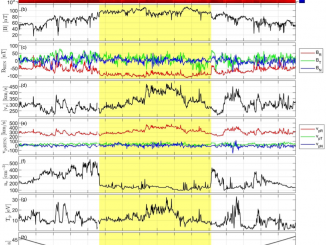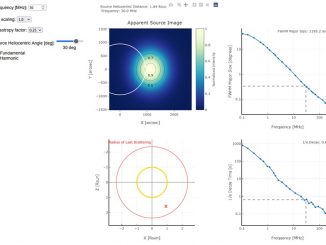Weak Solar Radio Bursts from the Solar Wind Acceleration Region Observed by the Parker Solar Probe and Its Probable Emission Mechanism by Ling Chen et al.
The study of solar wind acceleration and coronal heating has been a major challenge in solar physics. The main difficulty is that the collisionless characteristic of high-temperature, thin, and fully ionized coronal plasmas lead to the heating and acceleration of the coronal plasmas to be dominated by wave particle interactions, which are the “elementary processes” of the plasma collective interaction at the kinetic scales of plasma particles. Radio observation becomes […]


